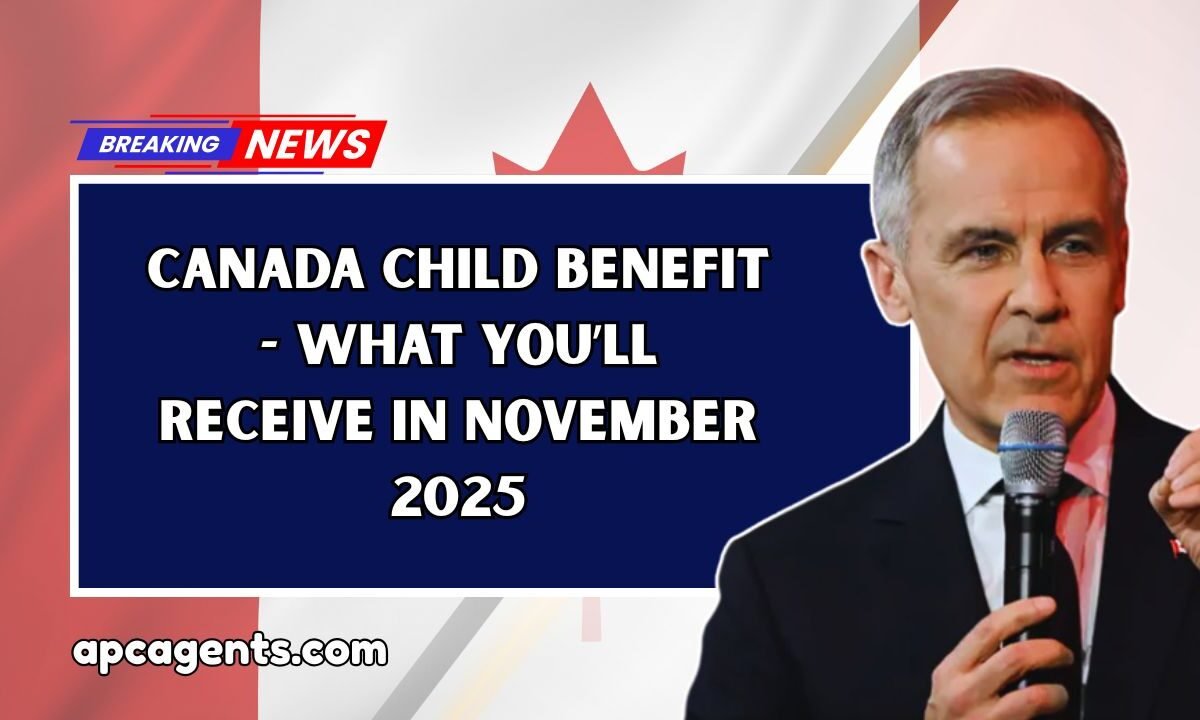Canada Child Benefit: If you are a parent or guardian in Canada, the Canada Child Benefit (CCB) is one of the most helpful financial supports available to families. Every month, eligible families receive a tax-free payment to help cover the costs of raising children under the age of 18.
The next payment is set for November 2025, and here’s everything you need to know about how much you could get, when the payment arrives, and what determines your amount.
November 2025 Payment Date
The Canada Child Benefit payment for November 2025 is scheduled for November 20, 2025. If that date falls on a weekend or public holiday, the money will usually be deposited on the last business day before that date.
Payments are typically made through direct deposit, ensuring funds arrive quickly in your bank account.
How Much You’ll Get in November 2025
The benefit amount increases slightly each year to match inflation. For the July 2025 to June 2026 benefit year, the maximum annual amounts are:
| Child’s Age | Maximum Annual Amount | Approx. Monthly Payment |
|---|---|---|
| Under 6 years | $7,997 | $666.41 |
| 6–17 years | $6,748 | $562.33 |
These amounts are the maximum possible. Your actual payment depends on your adjusted family net income (AFNI). If your family income is $37,487 or less, you will likely receive the full amount. Once your income goes above that level, the benefit is gradually reduced.
For families with children eligible for the Disability Tax Credit, there is an additional Canada Child Disability Benefit of up to $3,411 per child per year.
Income and Eligibility Rules
Canada Child Benefit: The benefit is based on your income from the previous year. For example, your 2024 income determines your payments from July 2025 to June 2026.
If your income increases, your benefit amount decreases slightly. The benefit is calculated for each child individually, and families with multiple children often receive higher total payments.
To qualify, you must:
- Be a Canadian resident.
- Live with the child, and be primarily responsible for their care.
- File your taxes every year.
- Update the CRA if your marital status, custody arrangement, or address changes.
If you are new to Canada or haven’t applied before, you can register by submitting a child benefit application through the CRA or filling out the form when you register your child’s birth.
Why the CCB Matters
Raising children can be expensive, especially with rising prices for groceries, clothes, and school items. The Canada Child Benefit helps families manage these daily costs, offering real support to low- and middle-income households.
For many parents, the monthly CCB deposit brings stability and allows them to focus more on their children’s needs.
Summary
| Topic | Key Details |
|---|---|
| Payment Date | November 20, 2025 |
| Children Under 6 | Up to $7,997 per year ($666/month) |
| Children 6–17 | Up to $6,748 per year ($562/month) |
| Low-Income Families | Full amount if income ≤ $37,487 |
| Disability Benefit | Extra $3,411 per eligible child |
| Requirement | Must file tax return yearly |
The Canada Child Benefit continues to be a major source of financial help for Canadian families. For November 2025, payments will be issued on November 20, giving parents across the country the support they need to manage household expenses.
If your income is moderate or low, you can expect to receive close to the full amount — around $666 per month for young children and $562 for older ones.
Keep your information up to date with the CRA to ensure smooth payments each month. The CCB remains one of Canada’s most valuable family programs, helping millions of parents provide a better life for their children.
FAQs
Do I need to reapply every year for the CCB?
No, you don’t need to reapply. Just file your taxes every year so the CRA can calculate your payment correctly.
When will I get my November 2025 CCB payment?
You’ll receive your payment on November 20, 2025. If that date is a weekend, the payment may come earlier.
Can I still get the CCB if my income is high?
Yes, but the amount will be lower. The benefit decreases gradually as your income rises.

